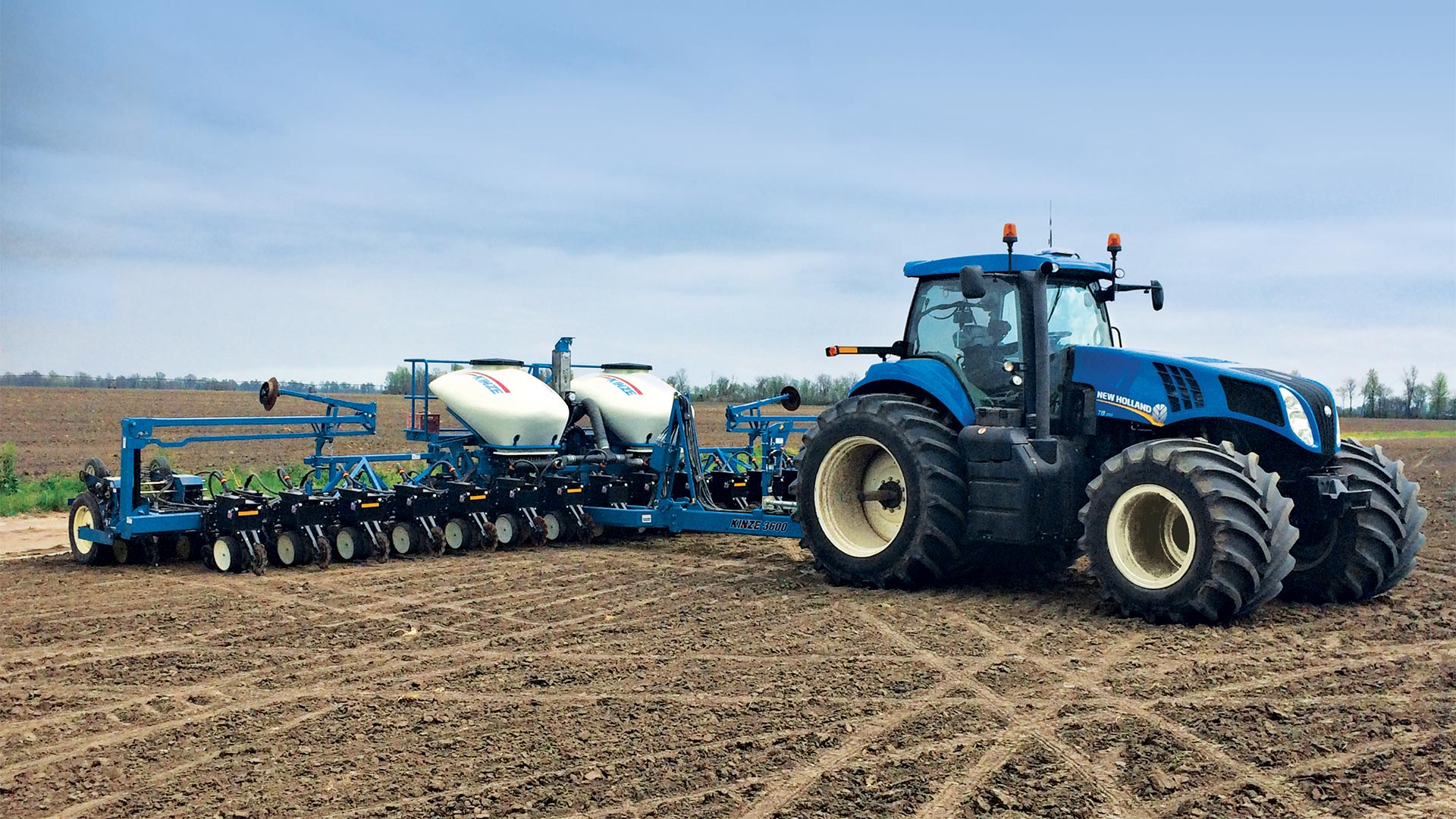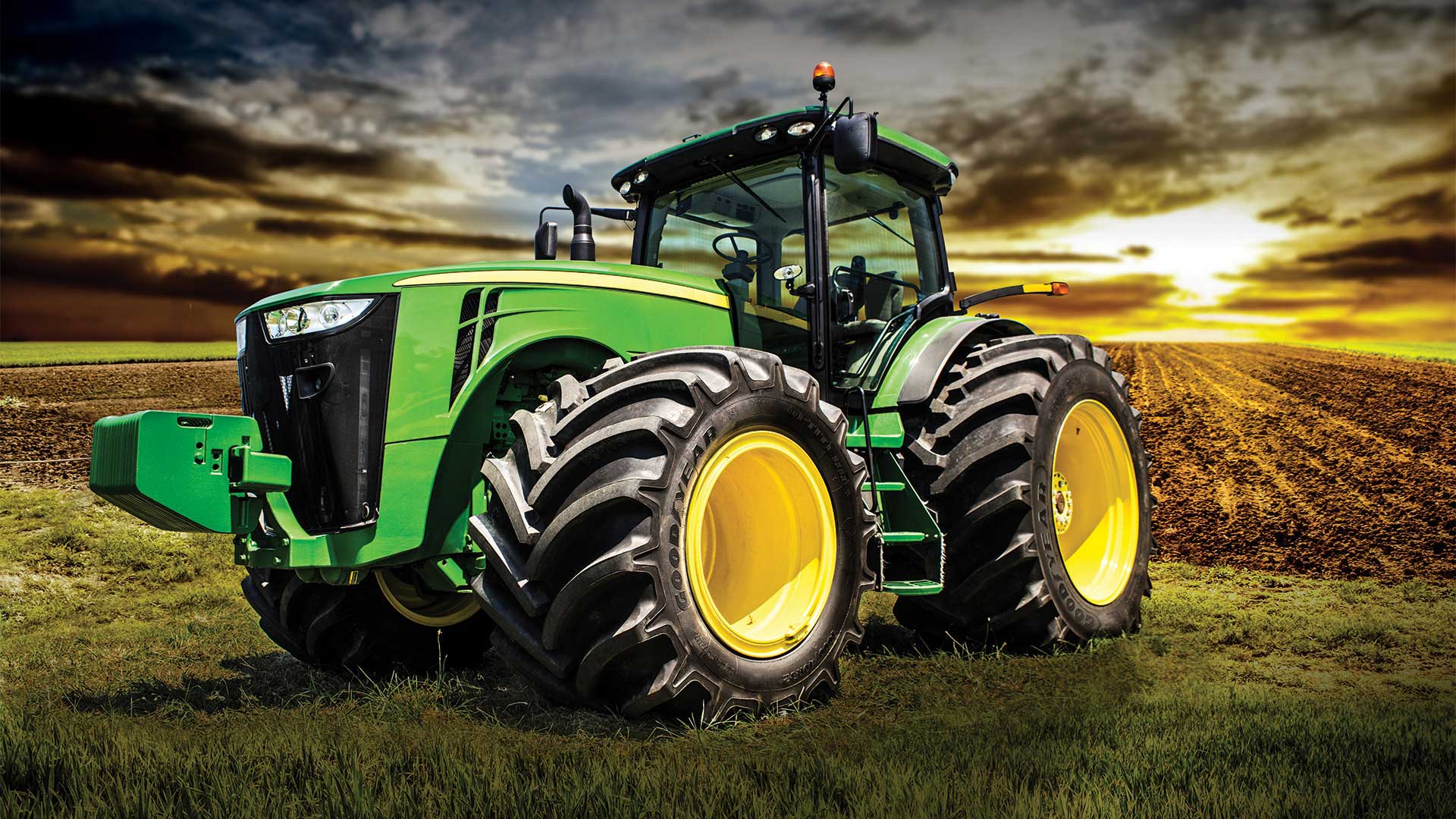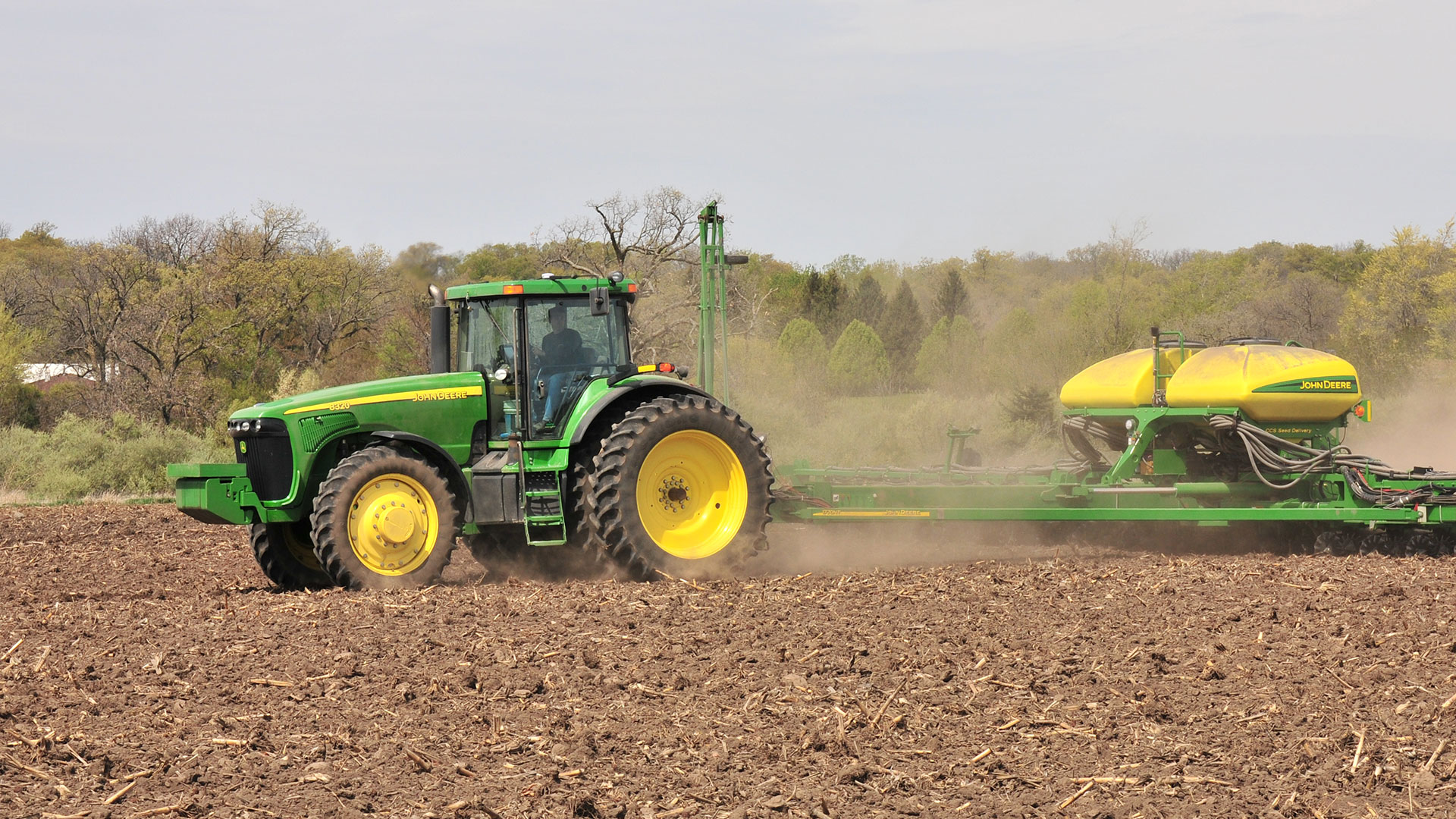Gaining Traction Home | AG AND FARM TIRE HOW-TOS | FAQs
Estimated Reading Time: 5 Min (including videos)
AG TIRES 101
Farm equipment continues to get larger, heavier and more powerful, but the envelope on the machine in which to fit the tire remains the same. That has led to new innovations in ag tire design and technology that allows the same size tire to carry heavier loads at lower inflation pressures.
To help you out, here’s a quick guide to the most common terms and acronyms you’ll see related to ag tires. Each includes a brief description and primary benefits, plus a few things to look out for to help you better understand exactly what you’re looking at when you’re shopping for tires.
THE DIFFERENCE BETWEEN RADIAL AND BIAS TIRES
Bias Ply – Bias tires feature multiple body cords that run in a diagonal pattern from bead to bead. This crisscrossing, and the type of fabric yields the carcass strength of the tire. Because of this construction method, the tread and sidewall of a bias tire function as one unit. This gives it extra stiffness and penetration resistance, but it also means a rougher ride and generally a shorter life span compared to radial tires. However, bias tires are typically less expensive.
Radial Tires – Two-part construction is what sets radials apart from bias tires. The cord plies are arranged at 90 degrees to the direction of travel, and the under-tread area is wrapped around the circumference of the tire by radial belts of steel or fabric. Radial tire construction is generally more durable and longer lasting than bias tires, but radial tires are also more expensive. For larger field production, radials are becoming the industry standard, whereas bias is still common in smaller sizes.
HOW TO READ AG TIRE SIZES ON THE SIDEWALL
If you aren’t familiar with how to read the numbering for the tire size imprinted on tractor tires, below is a quick overview to get you started.
For radial tires, a common size designation for sprayers would be an 380/90R46. In this example:
-
380 is the width of the tire in millimeters.
-
90 is the aspect ratio, which is the ratio of the height to the width of the tire. In this case, the height of the tire’s sidewall is 90% of its width.
-
The R stands for radial.
-
The 46 is the wheel diameter in inches. If the tire is an IF, VF or LSW, those letters would precede the size (for instance IF800/70R38). A CFO designation would come after the wheel size number.
For bias ply tires, a common size designation would be a 17.5L-24. In this example:
-
The 17.5 is the tire width in inches.
-
The dash stands for bias.
-
The 24 is the wheel diameter in inches.
These same designations for both radials and bias would apply to implement, sprayer, flotation, combine and grain cart tires.
The “D” at the end of some tire designations indicates its speed rating, or the maximum speed of the tire. A D rating is 40 mph, but speed ratings on ag tires range from A8 (25 mph) up to F (50 mph).
The number that precedes the speed rating letter is its load index, which designates the maximum load carrying capacity of a tire at its maximum air pressure and speed. For example, a 151B load/speed rating on a tire would mean 7,600 pounds at 23 PSI max at 31 mph. For a complete breakdown of load/speed ratings, you should consult the load/inflation tables provided by your tire manufacturer.
COMMON AG TIRE ACRONYMS
IF
Increased Flexion – IF tires can carry 20% higher loads at the same inflation pressure as standard ag tires or the same loads as standard tires at approximately 20% lower inflation pressures.
-
Benefit – By running at a lower inflation pressure, you can help reduce soil compaction.
-
Caution – IF technology is only effective if inflation pressure is adequately maintained by application and weight. The increased flex can cause problems with road lope, power hop and general ride quality if proper inflation isn’t maintained.
VF
Very High Flexion – VF tires can carry 40% higher loads at the same inflation pressure as standard tires or the same loads as standard tires at approximately 40% lower inflation pressures.
-
Benefit – Just as with IF tires, by running at a lower inflation pressure, you can help reduce soil compaction.
-
Caution – And just like IF, VF technology is only effective if inflation pressure is adequately maintained by application and weight. The increased flex can cause problems with road lope, power hop and general ride quality if inflation isn’t maintained.
CFO
Cyclic Field Operation – When operating less than 10 mph, CFO tires get a 55% plus-up in load carrying capacity as compared to IF tires, which is most useful for combines and grain carts. Also, CFO gets a 30% load bonus (from IF load) for cyclic applications under 20 mph.
-
Benefit – It can help reduce soil compaction and reduce the need to adjust inflation during significant changes in weight during harvest.
-
Caution – Compaction reduction gains are only realized if proper inflation pressures are maintained. Also, CFO cannot be used on tractors.
LSW
Low Sidewall Technology® (LSW) – LSW is a design that’s unique to the Goodyear Farm Tire brand. LSW tires feature a larger rim diameter than standard tires while maintaining the same outside diameter of tire. LSW tires meet all the same load and inflation capabilities as VF and CFO tires, meaning they can also help reduce soil compaction. LSW tires, though, come with some additional unique benefits.
-
Benefit – Because they feature a larger rim diameter, LSW tires help eliminate ride quality problems such as road lope and power hop commonly associated with a standard tire without IF and VF technology. This helps with transport speeds on the road and with getting the seed in the ground in high-draw-bar planting applications that would otherwise be disrupted by power hop.
-
Caution – Requires appropriate size of wheel and proper air pressure.
Need help finding the right tire? Find a local tire dealer today.
Featured Stories

SUPER SINGLES VS. DUALS: WHICH IS RIGHT FOR YOU?
Reduce soil compaction during the growing season by opting for LSW Super Single tires over duals.

HOW TO REDUCE PINCH ROW SOIL COMPACTION
If you’re looking to increase crop yield by reducing pinch row compaction, it’s time to rethink your tire size and tire type to make it happen.

HOW TO REDUCE ROAD LOPE AND POWER HOP
Understand what causes road lope and power hop so you can diagnose the problem and correct it.


